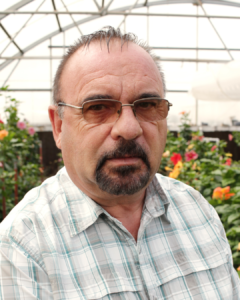Summary
Welcome to the online home of one of the world’s largest hibiscus breeding programs. On this page you will find a gallery of unique hybrids developed in our program, existing varieties, information about hibiscus events, news about developing hibiscus varieties, opportunities to engage with the breeding program at Vernon and information on where to purchase hibiscus varieties bred here.
Hibiscus Focus: Winter-Hardy and Tropical Varieties
The forage and ornamental plant breeding group at Vernon focuses on breeding hibiscus varieties that thrive across the varying array of Texas climates, which replicate most of the climatic conditions found across the globe. Hibiscus breeding efforts at Vernon have focused on creating as much genetic variability as possible to achieve new flower and plant characteristics. The breeding program accomplishes this by hybridizing species of hibiscus in both winter-hardy and tropical varieties.
Winter-Hardy Hibiscus Breeding
Since its inception in 2010, the hibiscus breeding program has evaluated more than 20,000 winter-hardy hybrids and developed more than 470 unique lines — many of which continue to undergo evaluation by our commercial partners. Several varieties are available on the market now. The Vernon program was the world’s first to develop a blue-flowering winter-hardy hibiscus hybrid called Blue Angel. The group has now created roughly 20 other blue hibiscus lines based on the genetics of this cultivar. They boast improved flower color, increased flower size and more compact plant shape. Other novel colors developed by program breeders include maroon, magenta, purple, mauve, fuchsia, salmon and many dual and triple-colored combinations. Our goal for the future is to create winter-hardy hybrids with yellow and orange flower colors.
Select Winter-Hardy Hibiscus Developed at Vernon
Tropical Hibiscus Breeding
Established in 2014, the newer tropical hibiscus breeding program at Vernon has evaluated close to 1,500 tropical hybrids and developed 160 unique lines for commercialization. These experimental lines continue to undergo evaluation by the program’s industry partners. The main objectives in developing new tropical hibiscus varieties include creating new flower and foliage colors and shapes, as well as plants with compact growth, which would suit smaller gardens and patio or container applications.
Tropical Hibiscus Developed at Vernon
Hibiscus News
Breeding Every Color of the Rainbow
Vernon looking to become hibiscus capitol of the world
Vernon hibiscus research draws public attention to AgriLife center
Colorful winter-hardy hibiscus hybrids continue trek to consumer gardens
AgriLife Researcher develops a painter’s palette of winter-hardy hibiscus colors
Texas A&M AgriLife’s novel winter-hardy hibiscus hybrids hitting U.S. market
Tropical hibiscus hybrids from AgriLife Research ready for market
Select Hibiscus Science Publications
Phenotypic Similarities in Flower Characteristics Between Novel Winter-Hardy Hibiscus Hybrids and Their Tropical Relatives. Frontiers in Plant Science. 2019. Please link the title to: https://www.frontiersin.org/articles/10.3389/fpls.2019.01528/full
Dariusz Malinowski, Ph.D.

For information on licensing any of these plants, contact Janie Hurley at jhurley@tamu.edu or (979) 845-6337.
Team Members
Taylor Fox, Research Technician I

























































































